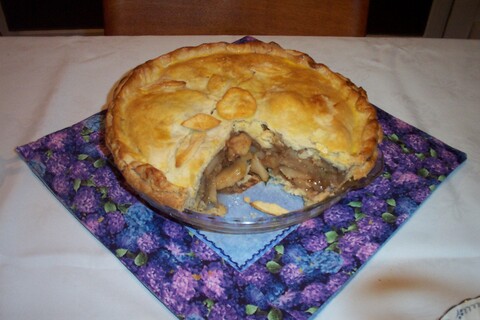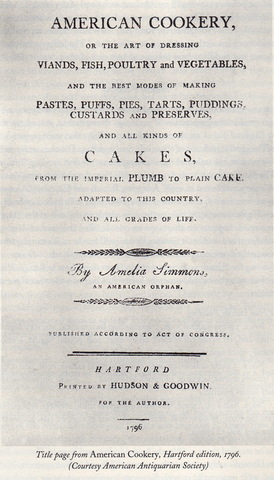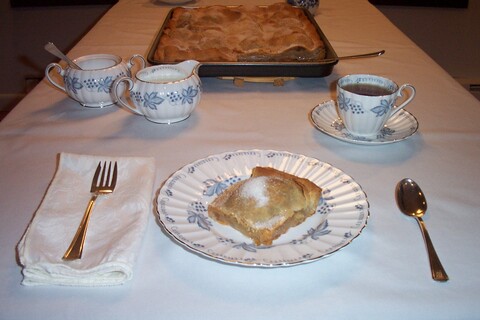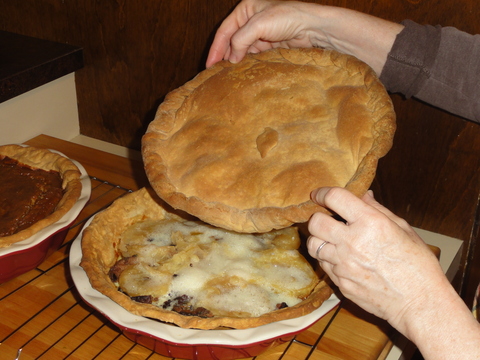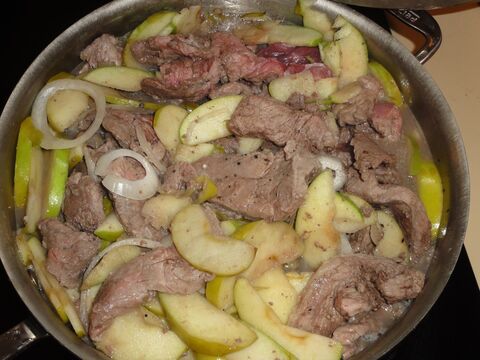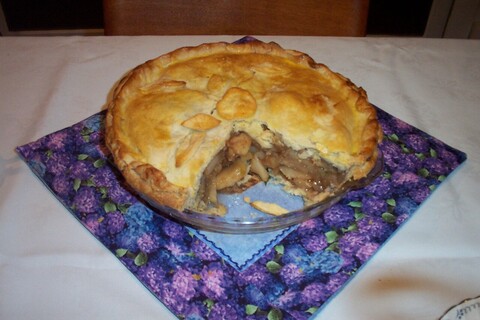
NINETEENTH-CENTURY APPLE PIE
This lightly sweetened, subtly spiced deep-dish apple pie is based on Lydia Maria Child's "Apple Pie," in The American Frugal Housewife (1833). Child's original recipe, with commentary, can be found in Keith Stavely and Kathleen Fitzgerald's Northern Hospitality: Cooking by the Book in New England (University of Massachusetts Press, 2011), p. 313.
MAKES ONE NINE-INCH PIE
8 SERVINGS
Preheat oven to 400°F.
Crust:
2 9-inch pie crusts, homemade or store bought
Filling:
10 cups tart apples, peeled, cored, and sliced (Macouns or Cortlands are nice apples for this pie; they can be found at farmers' markets and grocery stores in New England and elsewhere in the fall, though any tart baking apple, such as the Granny Smith, will work well.)
2 tablespoons sugar (or less, if you prefer a tart flavor or your apples are on the sweet side)
1⁄4 teaspoon ground cloves
1⁄2-3⁄4 teaspoon ground cinnamon
2 tablespoons rosewater, optional (A small amount of culinary rosewater, a traditional New England ingredient, adds a mild earthy flavor and a light floral scent to the pie; it can be found in some Indian and South Asian grocery stores, and online.)
1 teaspoon grated lemon peel
1⁄2 teaspoon lemon juice
1⁄4 teaspoon salt
Egg Wash:
1 egg yolk
2 tablespoons water
1 tablespoon butter, preferrably unsalted
Note: This large pie requires a deep-dish pie plate or tin.
Line a pie plate with one of the unbaked crusts, line the crust with parchment paper or aluminium foil, reaching up the sides of the crust, and fill with pie weights, dried beans, or rice. Bake for 10-15 minutes in a fully preheated 400°F oven.. Remove the crust from the oven, lift out the lining, prick the bottom of the crust, and cool it on a wire rack.
Increase the oven temperature to 425°F. Mix the sugar and spices into the apple slices. In a saucepan, cook the apple slices, stirring often, until they are just beginning to soften but still retain their shape. Add the rosewater, lemon peel, lemon juice and salt.
Fill the bottom crust with the cooked apple mixture and dot with the tablespoon of butter. Put on the top crust, carefully crimping both crusts together.
Place the pie on a baking sheet and bake for 10 minutes Reduce the oven heat to 350°F and bake for an additional 50 minutes. As the pie bakes, mix together the egg wash.
Remove the pie from the oven, brush the top crust with the egg wash, and bake for an additional 5- 10 minutes, until the crust is golden.
Cool the pie on a wire rack. Serve warm or at room temperature.
